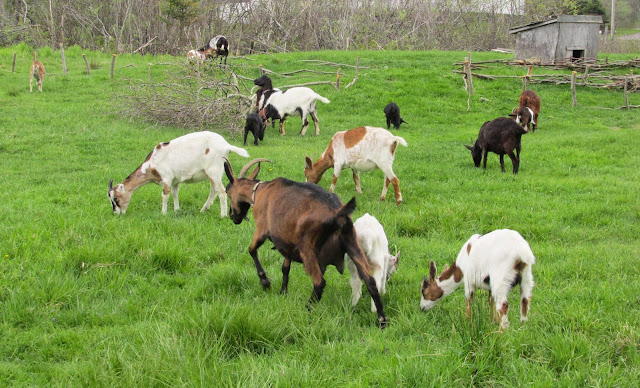I have been meaning to write this post for weeks. In anticipation for it, I've been diligently capturing photos to share with you. Unfortunately, every time I settle to write, something else needs my attention and it gets put off for another day. I keep joking that I need a secretary to follow me around armed with a cattle prod. No more putting it off or delaying. I am proud of the hard work Sean and I have put in and excited to share it with all of you. I think it will have special interest to those who have signed up for this year's CSA shares. :)
Last year we entrusted Cameron DePaola to start some early seedlings for us. He did a fantastic job and we are thrilled to have his assistance again this year. Cameron started some of our non-GMO, certified organic seeds attached to his aquaponic system several weeks ago. Aquaponics is the growing of plants or crops without the use of soil, using fish waste and water instead. Plants float in net cups with their roots submerged inside the tanks. Cameron's system uses a 100 gallon reservoir. The system is symbiotic; the plants feed on the fish waste and in return clean the water, making it a safe environment for the fish. Cameron feeds his fish a mixture of meal worms, super worms, and vegetable scraps. We'll pick up hundreds of tomato seedlings, cucumbers, sweet and hot peppers and watermelons in just a couple of weeks. We are very excited to see how this method compares to traditional seed starting in terms of our yield.
Last year we entrusted Cameron DePaola to start some early seedlings for us. He did a fantastic job and we are thrilled to have his assistance again this year. Cameron started some of our non-GMO, certified organic seeds attached to his aquaponic system several weeks ago. Aquaponics is the growing of plants or crops without the use of soil, using fish waste and water instead. Plants float in net cups with their roots submerged inside the tanks. Cameron's system uses a 100 gallon reservoir. The system is symbiotic; the plants feed on the fish waste and in return clean the water, making it a safe environment for the fish. Cameron feeds his fish a mixture of meal worms, super worms, and vegetable scraps. We'll pick up hundreds of tomato seedlings, cucumbers, sweet and hot peppers and watermelons in just a couple of weeks. We are very excited to see how this method compares to traditional seed starting in terms of our yield.
With all those seedlings coming, we needed to expand the garden space... a lot. In the spirit of using what we have readily to hand, Sean and I have been working overtime cutting down large Alders to weave into garden beds. By that I mean, Sean has been cutting down the Alders with his ax and chain saw while Kristen, Meaghan and I drag them where we need them. I lop off the unwanted branches and use them to weave in and out of the Alder stakes Sean set deep into the ground. Krissy and Meg move the unused twigs to the burn pile. It is a fine system and our garden beds are coming along very well. With continued effort, we should have them ready for the seedlings just in time for them to arrive.
The beds in the front garden have been planted with lettuces, kale, spinach, three types of onions, carrots, beets, radishes, broccoli, peas, and summer squash. How are they doing? Take a peek:

Our wintered-over and perennial herbs are making a fine showing this season. From last year we have; chives, rosemary, thyme, peppermint, winter green mint, sage, basil, dill, oregano, and lemon balm growing brilliantly. New this year we have added; chamomile, apple mint, bergamot, nettle, anise, and stevia. We are looking forward to experimenting with these in our kitchen to season our food or make into teas.
Another new development was creating a brand new field for corn, pumpkin, and beans. A very good friend of ours helped prepare the virgin ground for our initial crop with his rototiller. Normally, we let the chickens and ducks help us prepare beds for planting, but we
That goes for the goats, too. As soon as the garden is completely planted, the goats will be unwelcome in the back yard, too. The next project on our list, after the gardens, is to expand the goat's field once again to give them even more room. Every year, we expand their pasture deeper into the woods for them to browse. Eventually, they will have all of the wooded land to where our property borders the stream. This will give them several acres to roam at will. I can just see our family grilling on the back deck or hanging out at dinner with a nice view of our animals grazing under the trees. Close enough to see and enjoy without being so close as to be trouble.
 |
| Enjoy it now, goaties. Your time is short for back yard munching! |
I couldn't end this post without an update on sweet Chloe and Momma Lilly. Both are doing great, though Lilly still needs to gain some weight. Chloe is up to drinking 16 oz of goat's milk 3-4x/day and browses with the rest of the herd in between. She is exhibiting all the normal, healthy goat kid behaviors. We are very, very pleased with her progress. :)
Thanks for visiting with us today, friends. It's nice to share some company.
~Sean & Sonja ♥








